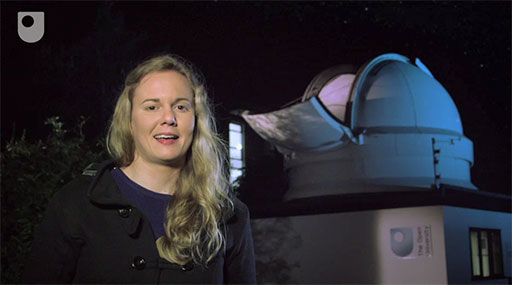Week 3: Looking closer
Introduction
Find out about ancient volcanism on the Moon and elsewhere, as well as present-day hot volcanism on Io and icy volcanism on Enceladus. Discover the heat source that keeps such small bodies active.
First of all, Jess introduces the whole week.

Transcript
By the end of this week, you should be able to:
- understand the significance of volcanic activity on moons
- consider the importance of Galileo’s discovery of four moons around Jupiter
- consider the place in our Solar System that is most likely to host extraterrestrial life.
